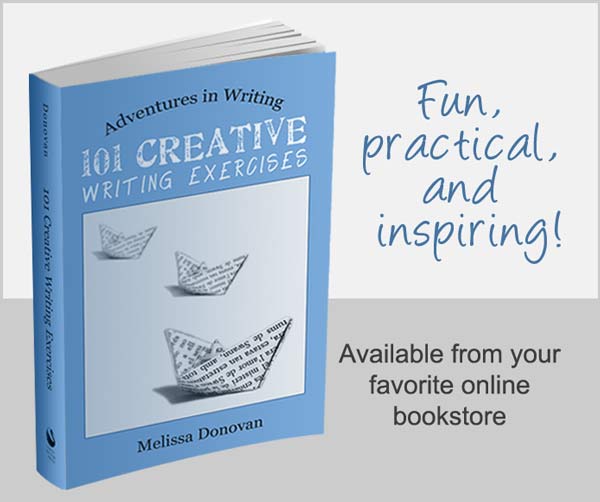Please welcome guest author Bryan Collins with a post exploring four types of writing. This post contains affiliate links that earn commissions for this website from qualifying purchases.
This craft of ours is hard. You’ve got an idea, you’ve finished your research, and you know you’ve got something important to write about. There’s just one problem. When you try to write, the words feel slow, awkward, and off target.
Do you want to know a secret?
Good writing does at least one of four things: it educates, informs, entertains or inspires.
For example:
- A tutorial shows a reader how they can accomplish a task.
- A news story tells your reader something important about a current event.
- A short story gives your reader a place to escape to.
- A self-help book inspires your reader to make a change in their life.
Great writing does all of these things. You don’t have to do all four, but before you start to write, ask yourself, what am I trying to do for my reader?
Here are the only four answers that count.
I Want to Inform
Take lesson from journalism. The job of a journalist is to tell readers of a newspaper, magazine, or website exactly what’s happening. Facts are the currency of a journalist. They write the most important point first, the second most important thing second, and so on.
Even if you’re not writing journalism, this type of structured writing will help you inform readers.
Your headline, first sentence, and first paragraph should answer the following questions in increasing levels of detail:
- What happened?
- To whom did it happen?
- Where did it happen?
- Why did it happen?
- How did it happen?
- When did it happen?
This approach will help you inform readers about a topic you’re passionate about.
I Want to Educate
Educating your reader means you must approach every topic with a beginner’s mind.
When you become practiced at a task or skill, your writing voice dulls itself on a groove of repetition. Your arguments establish themselves and your opinions solidify. You turn to the same haggard metaphors and imagery long after their prime.
This isn’t fun to write, and it’s not exciting to read.
Consider starting a new job: For the first few weeks or months, you are an outsider who sees the workplace differently and wonders why things are done a certain way. Sometimes, forward-thinking managers will capitalize on your outsider’s insight to make informed changes.
For those first few weeks, you are a unique commodity.
Writing like a beginner means bringing a renewed sense of passion and curiosity to the page. It means seeing things like an outsider or a beginner who is learning something for the first time.
I Want to Inspire
The author Christy Brown was born with cerebral palsy in 1932 into a large working class family in Dublin.
Although he didn’t receive schooling for much his life, Brown still learned to read and write with the support of his mother. As an adult, he wrote several critically acclaimed books and collections of poetry using his left foot.
In his autobiography, My Left Foot, Christy described what it was like to grow up with a disability and how others regarded him. He had no qualms about revealing intimate personal details, such as his loneliness and sexual desires.
Brown inspired many people because he pursued a passion in spite of personal adversity. Through this pursuit, he revealed an essential truth about living with a disability in Dublin during the middle of the twentieth century. In 1989, the director Jim Sheridan even turned the story of Brown’s life into an Oscar-winning film.
Brown’s story is an extreme example, but you can still inspire your readers to take action by writing honestly about adversity and how you regard the world you live in.
I Want to Entertain
If you want to entertain your reader, tell a story.
This creative skill is difficult to master until you turn to the Hero’s Journey.
This is the basic framework behind many narratives and popular stories told around the world throughout history. Essentially, a hero leaves the world they are living in to go on an adventure. After overcoming a challenge, he or she returns home a changed person.
The scholar Joseph Campbell best explains this framework in The Hero With a Thousand Faces:
A hero ventures forth from the world of common day into a region of supernatural wonder; fabulous forces are encountered and a decisive victory is won; the hero comes back from this mysterious adventure with the power to bestow boons on his people.
You can find this framework in films like The Matrix and Star Wars. In the latter example, Luke leaves his home planet to go on an adventure and save Princess Leia. What happens next changes him, and he becomes a Jedi.
When you write to entertain, tell a story about a journey and how the hero overcame a big challenge.
Ready to Write? Wait!
Before writing this article, I set out to give you an overview the four most common types of writing.
If you don’t know what type of writing you’re producing, you’ll find this craft harder and slower than it needs to be.
Please don’t be that kind of writer.
Before you start writing, establish what you want to give your readers. This will give you confines within which to write, you will find it easier to put the right words down, and you will have a goal to write toward.
Your readers will thank you for it.
What tips do you have for teaching, informing, inspiring or entertaining? Please let me know.
 About the Author: Bryan Collins is on a mission to teach people how to become writers and finish what they started with A Handbook for the Productive Writer. Start your journey on Become A Writer Today.
About the Author: Bryan Collins is on a mission to teach people how to become writers and finish what they started with A Handbook for the Productive Writer. Start your journey on Become A Writer Today.





This is a great breakdown and kind of eye opening, obvious once you see it. The article itself is a great example too. Thanks
Hi Kevin,
Good to hear you found the post helpful.
Hi Bryan!
Great post!
I wish they would teach these things in school!
I wish I had your post to give to my nephew as I tried to help him with a term paper! The examples of Who, How, What, etc. – excellent!
Many thanks!